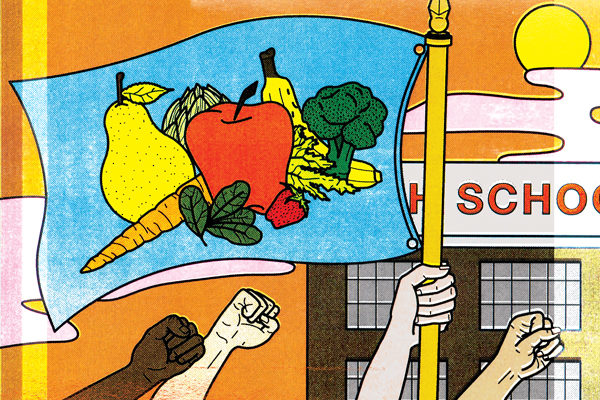AUSTIN, Texas — Researchers have suggested for years that the enormous amount of food marketing bombarding kids and teens contributes to rising levels of obesity. New research published in Nature Human Behaviour suggests an ingenious workaround: exposing teenagers to the food industry’s manipulative marketing techniques to tap into their natural desire to rebel — this time, against the snack makers themselves.
“Anyone who has spent time around teenagers knows how powerful their feelings of outrage can be,” said David Yeager, a co-author on the study and an associate professor of psychology at The University of Texas at Austin. “But what nobody had figured out was how to harness that energy to promote public health. Our experiment showed that teens’ feelings of righteous indignation are powerful enough to overcome the positive emotional associations with junk food that are created by the food companies’ manipulative marketing practices.”
The study’s approach produced an enduring change in both boys’ and girls’ immediate emotional reactions to junk food marketing messages. And teenage boys, a notoriously difficult group to persuade when it comes to giving up junk food, continued making healthier food and drink choices in their school cafeteria three months later.
In the study, led by Christopher J. Bryan, an assistant professor at the University of Chicago Booth School of Business, researchers designed a simple intervention to reframe how students viewed food marketing campaigns and tested it against a control group of teens who received traditional health education material about the benefits of healthy eating.
For the intervention, researchers went into eighth grade classrooms in a Texas middle school, issuing a fact-based, exposé-style article on big food companies to students. The article framed the corporations as manipulative marketers trying to hook consumers on addictive junk food for financial gain. The stories also described deceptive product labels and advertising practices that target vulnerable populations, including very young children and the poor.
Overall, the group that read the exposés chose fewer junk food snacks and selected water over sugary sodas the next day.
“Most past interventions seemed to assume that alerting teenagers to the negative long-term health consequences of bad diets would be an effective way to motivate them to change their behavior,” Bryan said. “That’s clearly a problematic assumption. We thought it could be the main reason why no one has been able to get teenagers to change their eating habits in a lasting way.”
To see whether they could prolong the effects, researchers tested the intervention on a new group of eighth graders. This time, teens read the exposé article, then participated in a follow-up activity called “Make It True,” where they received images of food advertisements on iPads with instructions to write or draw on the ads — graffiti style — to transform the ads from false to true.
Researchers found that teens who participated in the marketing exposé intervention made healthier eating choices for the rest of the school year — three months. The effects were particularly impressive among boys, who reduced their daily purchases of unhealthy drinks and snacks in the school cafeteria by 31 percent, compared with the control group.
The study was less conclusive about the intervention’s effect on teen girls’ cafeteria purchases. Although, like boys, girls experienced a more negative immediate response to junk food after the exposé intervention, their daily cafeteria purchases were similar whether they read the exposé or the traditional health education material.
Researchers speculated on whether the similar purchases meant that neither intervention improved girls’ dietary choices, or that both were effective but for different reasons. It could be that traditional health education influences girls’ choices because it mentions calories, which might trigger social pressures to be thin. If that is the case, researchers still suggested the exposé intervention for girls because it achieves similar results with less risk of body shaming.
“This study shows it’s possible to change behavior during adolescence using a light-touch intervention,” Yeager said. “Adolescence is a developmental stage when even the lengthiest health promotion approaches have had virtually no effect. Because so many social problems, from education to risky behavior, have their roots in the teen years, this study paves the way for solutions to some of the thorniest challenges for promoting global public health.”
Featured illustration by George Wylesol.




